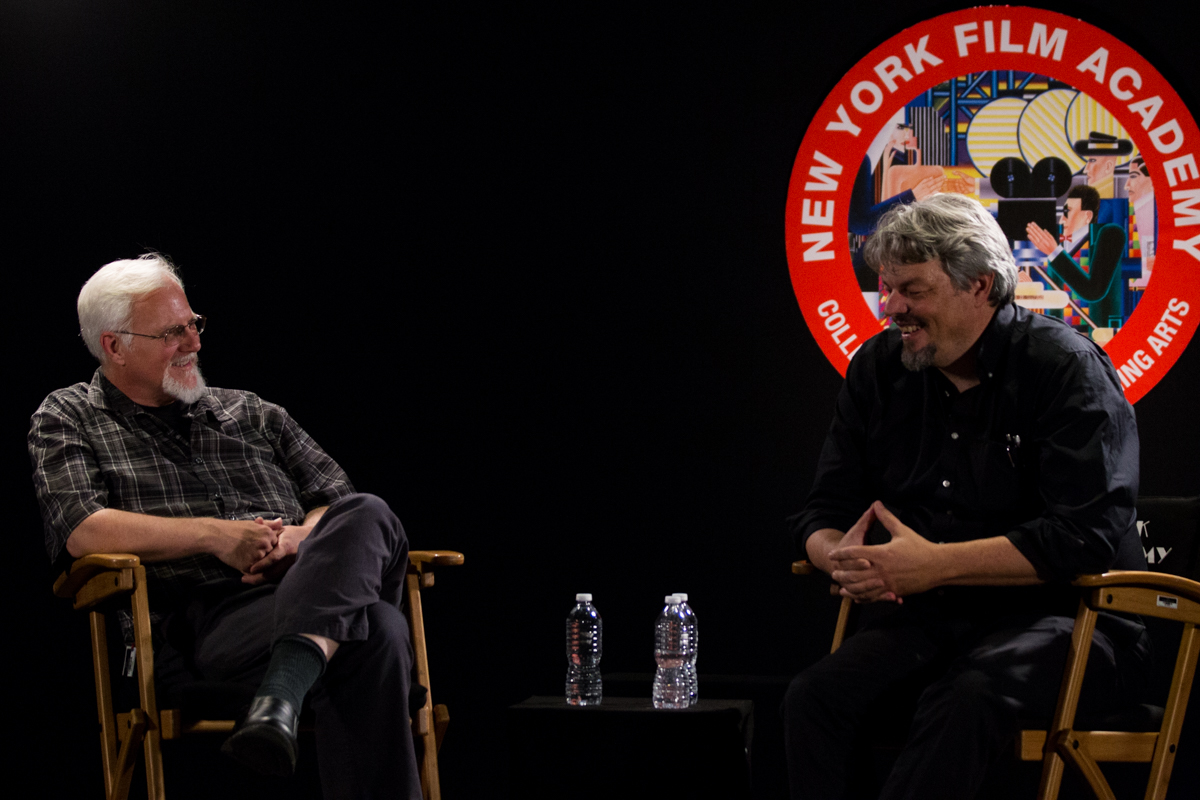
New York Film Academy students in Los Angeles had a glimpse into the new dimensions of filmmaking with a screening of Interstellar and the subsequent presentation by VFX supervisor and Oscar winner Ian Hunter, co-owner of New Deal studios. The film event was reminiscent of Star Wars screenings in the 70s with a line stretching out down the long hall in front of the NYFA Theater and around the corner!
After the screening, Ian gave a brilliant PowerPoint presentation giving a rare behind-the-scenes look at the making of the epic film. He related that the models were built at a massive 1/5 scale and shot with high resolution Vista Vision film cameras running at 72 frames per second to create the majestic imagery. Miniature explosions, rotating rigs, special light sources and tons of in camera VFX work were the primary techniques. Only one green screen shot was used in the entire film.

At the end of Ian’s presentation, chair of animation Mark Sawicki spoke with him to reflect on the modern shooting methodology used for the tentpole picture. Ian shared that unlike many productions, the pre viz of the film was used as a starting point and not a locked down template. Director Christopher Nolan, in his wisdom, knew that the final models photographed in real light would give rise to different and better ideas spring boarded from the pre viz. As a result, shots were not shot to the frame but as full takes, as if shooting live action, giving editing options later on. The process points out the proper use of pre viz as a starting point, thereby allowing the iterative filmmaking process to continue yielding happy accidents and lightning in a bottle. Mr. Hunter shared that pictures done in the 90s such as From the Earth to the Moon had 10% miniature and 90% digital effects, whereas Insterstellar reversed the equation with 90% of the imagery executed with real world miniatures to a stunning effect.

At this time Mark pointed out Ian’s groundbreaking involvement as a director in the new immersive cinema experience of Cinema VR where audiences witness the photoplay in a full 360 degree panorama. This new miracle of the screen is tantamount to adding to the cinema language itself. Ian made note that while takes are much longer when using this process, cuts are possible and sound cues and other techniques can be used to direct the audience’s attention. Mark could not think of a better person than Ian to take on and develop this exciting new art form. Ian’s film Kaiju Fury was shown at Sundance’s new frontier category launching the spectacular screen spectacle.
Thank you, Mr. Hunter, for shedding light on your process and guiding us to the next dimension of movie making!
